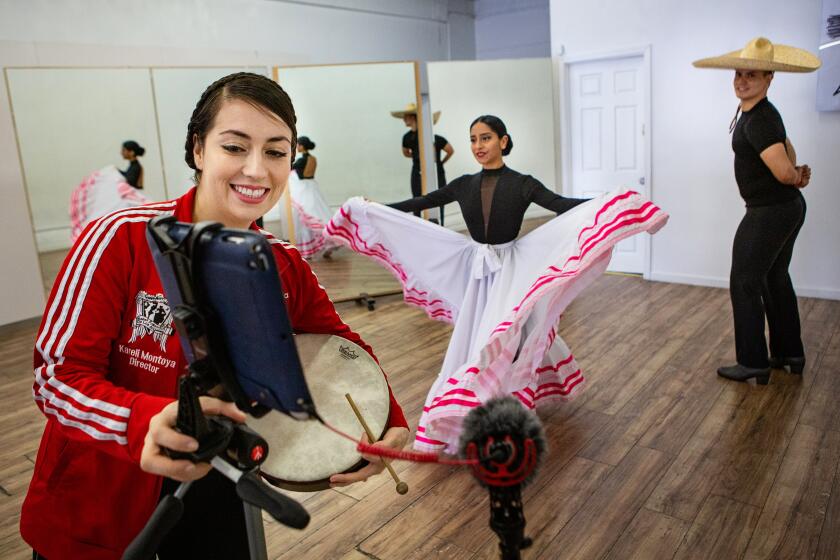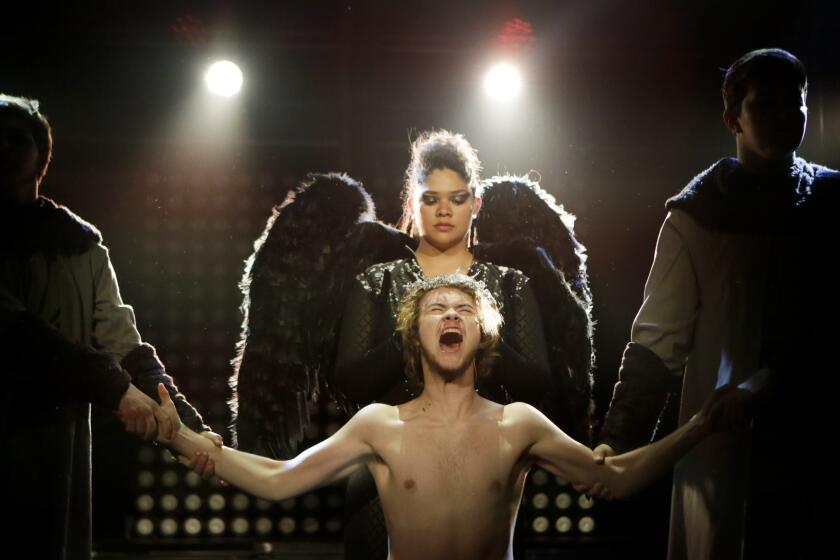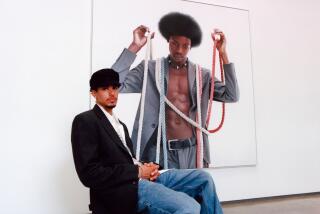I’m teaching on Zoom, and I’ve got to admit, my students are missing out
- Share via
“How can you possibly teach art online?” is a question that’s been asked of me, and for good reason: I’m the chair of the art department at Claremont Graduate University, which, like schools all over the world, closed campus in the middle of the semester and suspended face-to-face instruction to mitigate the spread of the coronavirus.
Classes weren’t canceled. They just went online.
That presents all sorts of challenges — and, as my ever-optimistic colleagues often say, opportunities — for faculty and students in all fields of study. In the visual arts, the challenges may outweigh the opportunities.
That’s because the visual arts are all about firsthand experience: standing in front of a painting, walking around a sculpture, entering an installation, enduring a performance or some combination of all of the above. No matter the media, style or format, immersing yourself in the substance and structure of the art is where everything begins.
That’s true for all viewers, whether you (used to) visit a museum once in a blue moon or spend hours in galleries. It’s particularly true for teachers, whose job it is to understand what students are doing — often before the students themselves understand what’s happening when they do their thing with oil on canvas, and printed images scavenged from the internet, and DIY assemblages of objects found or fabricated, abstract or representational, sensible or strange.
In every case, material reality matters more than usual. That’s not because the materials the artists work with are intrinsically valuable, like gold or lapis lazuli. More often than not they’re neither precious nor rare: torn cardboard boxes, discarded electronic hardware, scraps of wood, slabs of dried mud, carefully repaired rugs, even more carefully applied watercolors.
The physical features — and every little detail — of the works matter because of what the artists have done with them: Work them just so, sometimes swiftly and with whiplash aplomb; at other times meticulously, with painstaking dedication, even loving devotion. Often the artists do both, creating complex shifts in the pace and rhythm of their compositions.
That’s what I miss most about looking at art in the flesh: discovering details I would never have imagined mattered — and discussing those details, in the excitement of the moment, with someone who is starting to see their work differently. It’s an aesthetic experience. But it’s also personal — a kind of three-way communication, unique and consequential.
The difference between a look online and face-to-face engagement is like reading a menu instead of tasting the dishes. There is no substitute for the latter.
Every tint, texture and juxtaposition represents an artistic decision, whether or not the artists were conscious of that decision. Everything they have done is important because they have decided not to remove it from the finished work.
And that’s the problem with online instruction: the digitally transmitted images we see in our home offices (or kitchens or converted garages) make it difficult — if not impossible — to perceive all of the works’ physical features.
In a sense, the technology we use to maintain a safe distance between faculty and students makes its own “artistic” decisions: deleting details, editing experiences, changing colors, shifting scale and dimension. Digital imagery transforms what the artist did into something different from reality.
Impact and atmosphere, both sensual and psychological, come across differently than they would in the flesh.
So do the exchanges that emerge from them. Online, the natural gaps in a conversation — the silence of thinking — come off as communication breakdowns.
Teachers’ freedom of movement is also constricted. Rather than engaging a work spatially and at our own pace, we look at it while seated at a desk. Gone is the participatory thrill of seeing something across a room, swooping in for a detailed look, following our eyes as they dart and linger, sometimes ricocheting from one piece to another and sometimes pausing to rest, savoring a particular passage, gesture or pattern.
The coronavirus crisis forced dance companies — folklórico, ballet, modern — to find ways to make money and reach audiences. Think screens, not stages.
The real question may not be “How can you possibly teach art online?” but “How can you possibly understand art online?”
My simple answer to that complex question is: “At best, imperfectly. At worst, inadequately.”
Teachers often teach subjects that we understand only imperfectly, especially when it comes to complex topics and advanced research. But the second part of the answer is (or should be) a deal-breaker: It undermines the integrity of what we do: reveal truths to students by creating conditions that allow them to see the world more deeply and vividly and truly than they would without our input.
Understanding, after all, is not a logical or cerebral endeavor. With art, it’s a whole-body experience.
Works of art engage the intellect, but they do so by way of the body. We often feel the best ones in our gut, moments before our mind has a chance to begin making sense of them. And that’s impossible on a tablet, laptop or phone. The mind goes to work prematurely: Seeing images and not real things, it shoehorns art into categories we are familiar with, into pictures (and patterns) we recognize. Loose ends and rough edges get overlooked. Unexpected discoveries are missed. The same goes for propositions we’ve never imagined, much less been exposed to.
Online, we get an idea of what’s taking shape in a student’s work. But the distance between that idea and reality ranges greatly.
Sometimes it’s similar to the difference between reading a play and attending a performance of that same play. Both are valuable. But the former is not necessarily as embodied, multilayered or forceful as the latter.
At other times, the difference between a look online and face-to-face engagement is like reading a menu instead of tasting the dishes. There is no substitute for the latter.
So it’s possible to communicate with students online about their works during a pandemic, when in-person studio meetings are too risky. But when weeks turn to months, it’s disingenuous to treat online art instruction as a replacement of the real thing.
At a time when understanding what’s going on all around us — and empathizing with others — is more important than ever, the loss of the understanding that art brings us saddens me deeply.
After coronavirus crisis shuttered schools, high school shows were canceled. For many performing arts students, it feels like a blow to their future.
More to Read
The biggest entertainment stories
Get our big stories about Hollywood, film, television, music, arts, culture and more right in your inbox as soon as they publish.
You may occasionally receive promotional content from the Los Angeles Times.












